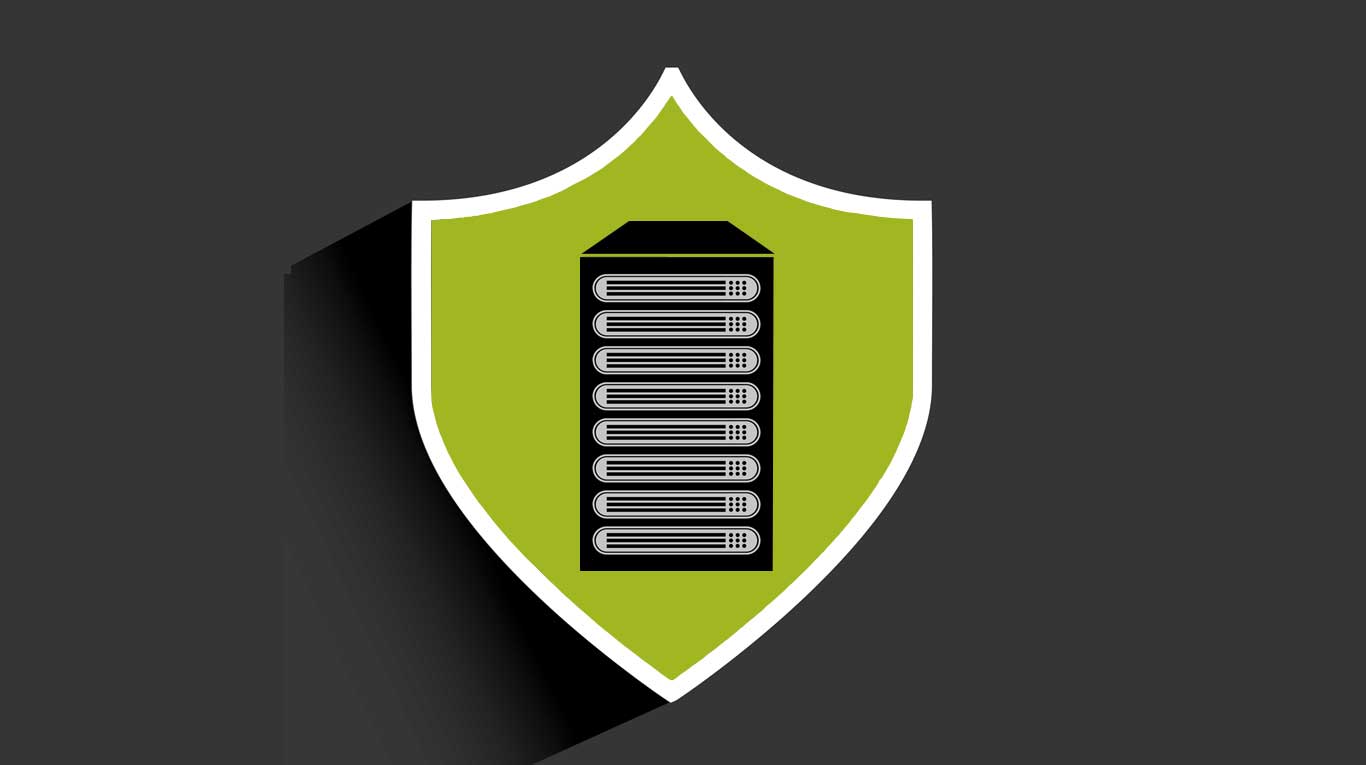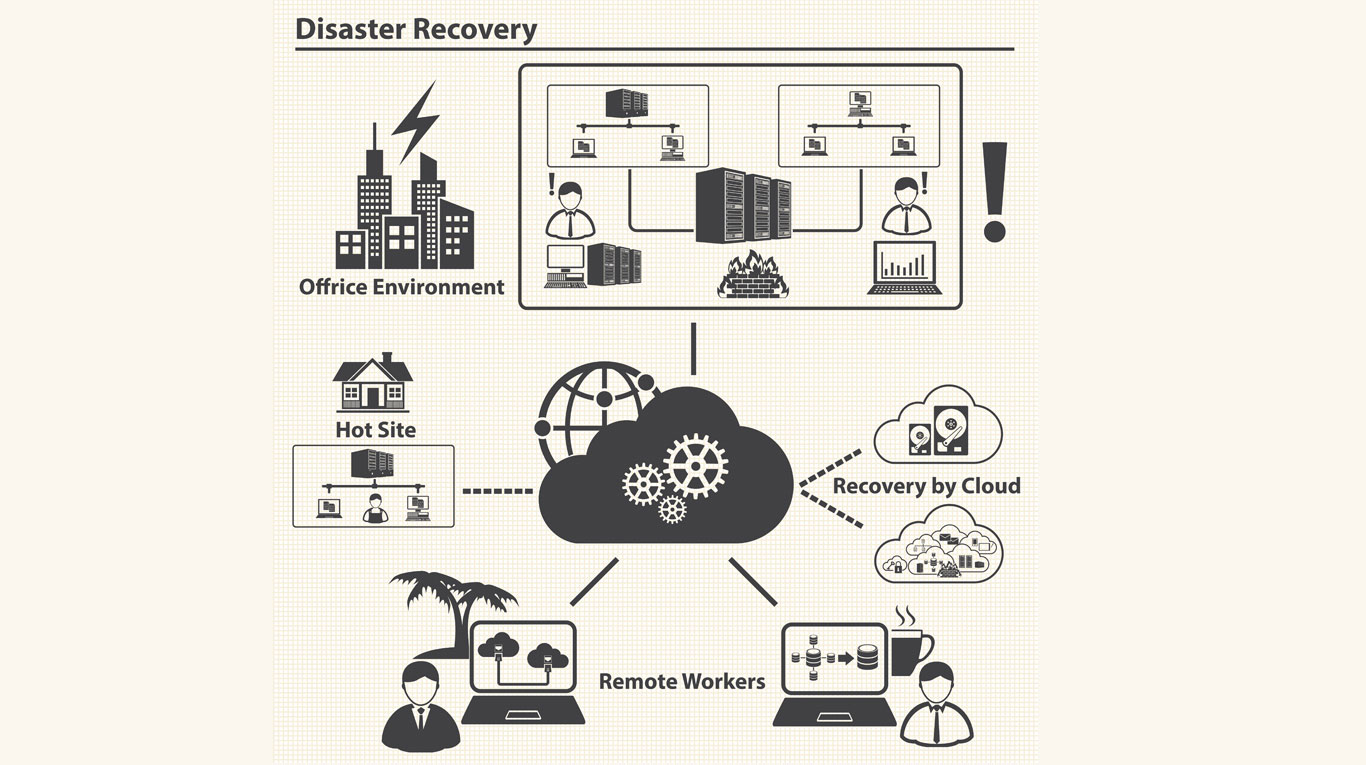How secure is your Data Center?
Data Center is the core of today’s IT world. With growing technologies like cloud computing, virtualizations and latest IT applications, building today’s Data Centers are a bit more complex. It is important to protect Data Centers from malicious attack. Equally important is to ensure that the Data Center infrastructure like network, storage, servers and desktops too are secured and monitored all the time to avoid any possible threat. Traditionally, network teams would secure network and applications with encryptions. However with today’s growing IT requirements, it is important to have more robust and dynamic security systems to secure the Data Center.
Data Center security is of primary importance to IT organizations. Organizations should make sure that every element of Data Center is monitored and secured. They may either decide on managing it on their own or opt for outsourcing. However they should carefully evaluate the options that is suitable for optimally securing the Data Center.
Access Control methods for Data Center
Physical access to the Data Center should be carefully planned and managed. Entry to the Data Center should be restricted with limited access. Only Authorized person should be allowed to enter Data Center – with badge access to the building and security-escorted entry to the visitors. Additional Security layers can be added by separating Testing, Development and Production zones. Depending upon the sensitivity of the data in the server, access to each zone should be restricted with key card admittance and biometrics. The entire Data Center should be under video surveillance.
Network Security
Network is the backbone of your IT infrastructure when security solutions are planned. It is important to implement security methods zone wise. The Production Zone where you have all your mission critical data should have strict rules implemented for incoming and outgoing traffic. The Development Zone may have a less rigid environment. The Testing Zone environment should be isolated from random traffic of Development Zone. There should be a physical separation between internet accessible servers and other infrastructure.
Data Security
Data Security should be separated from Server Security. Different servers handle different type of data and security rules should be implemented accordingly. Firewalls should be setup to separate the access to different data. The firewall rules should be implemented and configured depending upon the access levels required for each type of data. Moving data should be scanned for potential privacy leaks and it should be ensured that data goes to right person and is properly encrypted. Encryption policies should implemented with software encryption. Patching programs should be implemented regularly to avoid vulnerabilities on the servers.
Application Security
Today’s IT applications are big with complex architectures and it is important to take care of application vulnerabilities before it goes into your production systems. Applications must be scanned for vulnerabilities that hackers can easily exploit. The reported vulnerabilities should be rectified and proper security metrics should be applied before any application goes into production. Developers should run their own code through a code scanner that scans the source code for buffer overflows and other vulnerabilities. Before it goes into production, it is important for both code scanning and application scanning for all possible vulnerabilities.
Cloud and Virtual Network Data Security
Organizations need to focus on securing the cloud based, virtualized network and storage as well. Virtualization has added new security issues. Virtualized network can be separated and isolated so that different set of rules can be implemented to manage the security. The host based security systems can be implemented to monitor virtual machines and network, to detect any malicious activity. Within a virtualized Data Center, administrators can compare and analyse client to server traffic to check the legitimate traffic. Cloud computing requires a different security approach. Hence security methods need to be implemented to ensure the data flow between Data Centers, Client Systems and Data Centers and between Virtual Machines within the Data Center. It is important to ensure that these flows and not carrying malicious traffic. Good coordination of networking devices, firewalls, SSL devices and intrusion prevention solutions can ensure a robust security for cloud computing environment.
Overall, a good Access Control System, Fenced off Boundary, guards to control Physical Access, Video surveillance, Network, Data and Application Security measures – all implemented together can form a robust Data Center security system.
Advantages of Integrating Cloud with traditional Data Centers
A growing number of organizations are adopting cloud computing to meet the challenges of deploying their IT services as fast as they can and addressing their dynamic work load environment there by maximising their ROIs (Return on Investments).
Across the globe companies have started to view hybrid cloud as a transformative operating model – a real game changer that presents the wealth of opportunities to businesses. The two mantras which helps you to follow while adopting this technique is Enhanced agility and Overall cost savings.
Cloud computing help’s the users to access the IT resources faster than the traditional Data Centers. It also provides improved manageability requires less maintenance. This technological service also helps the users to access the resources they need for a specific task. This not only prevents you from incurring cost for computing resources which are not in use, but, improves the operational efficiencies by reducing cost and time.
By adopting Cloud computing, businesses can rapidly integrate and deliver services across the other adopted cloud environments and thereby improving business agility so also lowering the costs. Once businesses recognize this they need to choose the cloud computing option that best fit their business requirements.
Like public cloud model, private cloud models also offer seamless access to applications and data with minimal IT support. But in private cloud the service will be offered only to a particular organization. Two common types of clouds are Integrated stack and Custom cloud. The key benefit of integrated stack is pre testing and interoperability to reduce operational risks and faster deployment time as the stack is most often delivered as a single bill of material. And the importance of custom cloud is, a modular plug & play approach that allows organizations to build cloud infrastructures in smaller increments, adding capacity when needed.
Hybrid model is a combination of public and private cloud models. Now a day’s every organization started looking and adopting it due to its cost benefit. Getting into a hybrid model and the key to success is, understanding how to get started on your hybrid cloud. First of all you need to know the integration method. The dominant strategy in creating a hybrid cloud that ties traditional Data Centers with public cloud services involves the use of a front end application. Most companies have created web based front end applications that give customers access to order entry and account management functions, for example, many companies also used front end application technologies from different vendors to assemble the elements of applications into a single custom display for end users. You can use either of these front end methods to create a hybrid cloud.
The front end application based hybrid models, the applications located in the cloud and the Data Center run normally; integration occurs at the front end. There are no new or complicated processes for integrating data or sharing resources between public and private clouds.
A business can choose from a vast array of potential organizational structures. Lateral organizations, top down organizations and other type of organizational structures can all be combined into a hybrid structure. This allows a company more flexibility in distributing work and assigning job rolls. It can also be beneficial in small businesses where there are fewer employees to manage daily operations.
Hybrid structure also helps the organization to choose Shared Mission where it creates a shared mission and allows it’s employees to work on a different projects and in different sectors. This structure creates a unified team of individuals with a common goal and different experience and interest levels. Each employee is able to perform work in the areas he/she best suited to, moving from project to project and reporting to different individuals as and when it is required.
Another example of hybrid structure is Market Disruption, through which when an organization adopts itself into a market and overcomes traditional barriers of the market such as advertising budgets that could cripple financially smaller organizations. Here considering the B2B perspective, this structure can ride the wave of market disruption to a peak of creating a massive media blitz that fuels product development and demand.
The next benefit to the hybrid organizational structure is the Massive Scale that can be reached by its use. Instead of having a top heavy, traditional structure of management and employees, a hybrid organization uses a spider web based structure involving groups of individuals, sometimes in different geographic areas, working together to accomplish shared goals. This also removes the problem of distribution pipelines slowing down access to the finished product.
Ease of maintenance is another attractive characteristic. It is because cloud computing architecture requires less hardware than distributed deployments. Fewer dedicated IT staff members are necessary to maintain the integrity of the cloud’s infrastructure particularly during peak hours.
Cloud computing also supports the real time allocation of computer power for application based on actual usage. This allows cloud operators to meet the demand of peak load hours accurately without over provisioning, increasing the clouds efficiency while freeing up additional capacity for on demand deployment. From an IT perspective, support for rapid provisioning and deployment is another attractive characteristics that appeal to growing enterprises.
Cost reductions, easier implementation & maintenance, and a better flexibility are the significant benefits of cloud deployment.
Operating costs are controlled by a good design and implementation of the same. Over the long term it is very critical to optimize both capital and operating expenses. Every industry has its own leaders, with a unique jargon and cultural conventions that B2B marketers must take into accounts.
Ways to Ensure your Data on Cloud is Safe & Secure
https://www.sifytechnologies.com/dc-services/Managing your data on the cloud offers myriad benefits to your business. But like any other technology, cloud computing also has its share of risks involved. When considering a move to the cloud, consumers should get familiar with the potential security risks.
There are a few security and privacy challenges relevant to cloud computing and if you have a clear understanding of them, you can safeguard your data against them. Both you and your cloud service provider have responsibilities that address the potential risks. Here are the things to consider to ensure data security:
- You should implement a tiered protection layer for your data to create a security model that includes a multiple perimeter rings of defense. Different layers of defense will safeguard your data from both, internal and external threats.
- Make sure you manage authorisation process. Create a coherent hierarchy of people or departments that have access to your data on the cloud. Moreover, deploy a program to review access trails. Ask your cloud provider if there are process and functionality that control who has access to the data. Work with a provider that offers a cloud environment that is controlled and managed.
- Secure networks and connections are another imperative when choosing a cloud provider. You must evaluate the type of external network controls offered by the provider to distinguish authorised traffic from the unauthorised one. And you should do the same internally as well.
- Evaluating physical infrastructure and facilities of the cloud provider for security controls is extremely important. The physical infrastructure is managed by the provider and you must get assurance from them regarding security in the facilities. Your service provider must have mandatory security controls on their human resources.
- Authorised personnel and physical security are not the only concerns, you should also ensure that the facility is protected against external and environmental threats. Check with the provider whether or not appropriate facilities are in place to make sure that services will continue in case of equipment failure or environmental threats.
- Scrutinising application security is another important aspect, specifically in SaaS deployments. While the cloud provider has the liability of application security, it is imperative that you know all about the security measures taken.
- Go through the security requirements of the exit process. In the event of the termination of service, the consumer must be provided with a smooth transition of data, without any loss or security breach. Make sure the exit process is properly documented in the contract to provide security during the transaction.
The greatest security concern for any business is to pick the right provider. Keeping your data safe is as much the concern of the provider as it is yours. Therefore, you must ensure that you choose a provider that takes data security as a priority so that your doubts are put to rest.
Benefits of Managed Cloud Services
Cloud computing is taking shape as a fundamental to business growth. Between the fray of private and public cloud, managed cloud services can help businesses maximize the benefits of cloud adoption. Managed cloud hosting provides the balance between scalability and facility of public cloud and better reliability of on-premises solutions. Managed cloud solutions are considered by many businesses because of the cost-effective and well-managed computing resources, IT efficiency and flexibility. Any business focused on devoting more time to business process than IT should consider the benefits of managed cloud services.
Customization of the solution
Depending on the requirements of each business, the managed cloud solutions are completely customizable. They are designed and implemented by the providers to meet the requirements within the industry a business operates. This is so because the provider who can diligently monitor the way client manages the cloud solutions uses the solution. It is an important factor in getting technical details to further ease the process that is brought about by the technical nature of the cloud solutions.
Improved deployment of the solutions
Managed cloud solutions have become crucial to business processes and are evolving at a faster rate. The managed service providers can track the technical information about the usage and the programming interface of their cloud services. Since managed cloud service providers have the ability to monitor the usage of their solutions and their response time, they constantly improve the design and deployment of the services.
Better system availability
Another advantage of managed cloud services is better availability at increased speed. Your cloud-hosting provider offers high-speed cloud resources that give you the leverage of mining through massive amounts of data at a faster pace. With optimum bandwidth, data storage and uptime, you can rest assure that your online processes will go on uninterrupted even with heavy loads. The speed and agility of managed cloud solutions will assist you in focusing on your core business strategies, making your customers happy and expanding your business.
Increased reliability
With managed cloud solutions, you will be provided extremely reliable services because the provider maintains control and is capable of clearing up the issues in the system right away. The provider ensures that the infrastructure is functioning at optimal levels and identifies potential threats. Since a managed cloud solutions provider carefully administers the cloud, consumers get reliable services they can trust their data with.
To garner the many benefits of managed cloud solutions, teaming up with an experienced provider is of utmost importance. You must work with a provider that is architecturally sound and has reliable infrastructure with expertise in different cloud administration functions from configuration to ongoing maintenance.
How the start-up industry can benefit from cloud computing
India has been gripped by an intense wave of start-ups. From tech solutions and e-commerce to healthcare and food deliveries, these start-ups are being embraced more and more by Indian consumers and also attracting a substantial amount of attention from foreign shores in the form of angel investors and venture capital.
For the 50 million or so start-ups and small businesses in India, cloud computing is set to be a game changer. The need to stay a step ahead of others is what’s causing Indian companies to finally approach cloud service providers. Moreover, cloud computing is on the brink of an explosion in India.
While there had been reluctance in adopting cloud solutions in the past, the trend is now changing. According to IDC, the cloud computing market in India stood at $688 million in 2012. This very figure is predicted to rise to $3.5 billion by 2016. An IDC survey of 473 respondents resulted in 200 opting for cloud solutions. Cloud computing and its services can give a considerable amount of boost to enterprises in terms of technological stability.
Start-up companies can store, manage, process data and use programs through a web-based interface – something that greatly reduces costs. Data stored in the cloud can be accessed from anywhere through various devices with web connectivity, which is an advantage for small companies that don’t have a huge IT budget. Cloud is not all about storage. Companies can also move their operations and applications on cloud.
Traditionally, a start-up is likely to spend a great deal on computer equipment to kickstart its business. Typical expenses include servers, software tools, database licenses and other IT equipment that are needed to perform tasks like payroll, performance management, paying bills and tracking their sales leads. Moving to cloud drastically eliminates such up-front costs, leaving businesses with more capital at hand to invest on other business plans.
SMEs usually have bad technological infrastructure. Either they have to resort to buying expensive software designed for large companies or build their own cheap applications that lack functions. Moving to cloud is a smart move for any start-up. Cloud offers the flexibility, agility and security required by SMEs at a modest price. The resources that once were limited only to large enterprises are now conveniently accessible as well as affordable.
On top of that, cloud computing enables businesses to get up and running promptly because of swift services and professionally-arranged infrastructure. With cloud, SMEs get access to experts doing what they do best. Cloud services are bringing a balance to this field and start-ups can be the harbinger of this technological change.
Evolving Technologies and the Modern Consumer
Technology has shaped the way we interact, consume, create, learn and communicate. In short, modern day technology has seeped into all aspects of our lives in a way that one tends to think how did the people manage without it? Today, people can have face time with a client while preparing a presentation and pay their bills from the car on their way to work. In essence, new age technology has ensured that we are already living in the future.
Telecom and the consumer
The telecommunications have graduated from aiding consumers to communicate through time and distance, to multimedia. Over the last few years one has witnessed a gust of change in the several realms to make entertainment, education and advertising more accessible and real to the consumers – thanks to the seamless MPLS services and Ethernet facilities, uninterrupted network coverage along with high-performance, high-security Internet services.
Taming the smart technology
In the past decade, mobile phones have increasingly become the center of the universe for most consumers globally. Today’s consumer wants everything on the go and as mobile devices take centerstage, businesses start reaching out to more people. This has led to a huge paradigm shift in the telecom industry as the operators invest in advanced technology for more transparent customer service. Given the competition in the sector, each operator is going out of his way to attract more customers. To engage a wider customer base and cash in on customer loyalty, you must have a scalable and reliable network infrastructure that offers long term possibilities for your business.
Innovation is key
The world of information technology is extremely dynamic. This means every day you are presented with a new choice and the end-user, today, wants to spend on the very latest technology even for personal use. In such a rapidly shifting environment it is key for the telecom companies to be able to keep up with the pace of ever-changing environments. It will be safe to say one of the major challenges for telecom companies going ahead is to switch gears and try to imbibe as much dynamism as the changing needs of your customers.
Efficiency and security
Telecommunications has become indispensable to socioeconomic activities. Therefore, telecom operators, must focus on reliable and secure services. You should rely on companies that offer security infrastructure that protects against potential threats, provides centralised security control for distributed Internet access, high-security DIA and real time detection of intrusions.
Sophisticated networks and best-of-breed technologies are essential to every telecom operator. So is standardisation and interoperability of systems to derive maximum benefits from their businesses. You must keep up with the changing trends of the industry by leveraging a state-of-the-art service that goes beyond coverage, flexibility and scalability. A service that offers you an edge over competitors and enables you to convert your digital mobile consumer into a revenue stream.
A to Z of disaster recovery post natural calamity
With the businesses running across the globe, at different geographic locations, current enterprise systems have become large and overly complex. Applications and data are fundamental to business and the smallest downtime can cause millions of losses. Imagine a natural catastrophe to strike at any location making data loss. Rebuilding infrastructure and getting data recovered is next to impossible thing if Business Contingency or Business continuity Plans (BCP) are not in place. Disaster Recovery is a subset of BCP. It is vital to have Disaster Recovery Plans ready. In this article, we will see what a disaster recovery is? What is Disaster Recovery Plan and what are the available solutions.
What is Disaster Recovery?
Disaster Recovery basically means getting vital infrastructure recovered and protecting from significant damages. It involves a security planning which includes policies and procedures to maintain business continuity in case of disaster or disruptive events. Loss of Data or disruption of service causes critical financial impact. Thus, it is very much important that your disaster recovery plan is ready in place in order to come out of disasters with minimal impacts.
What is Disaster Recovery Plan?
Disaster Recovery Plan also referred as business continuity plan or business process contingency plan has the procedures and policies described in order to deal with the disaster to make sure that the business critical functions can be continued without disruption or at least with minimal disruptions
What are Disaster Recovery Solutions?
Traditional disaster Recovery strategy involves building a DR infrastructure where you need to take regular backups of your business critical data and applications, have them up to date on your DR locations which is at a geographically different location. If you want, you can work with a traditional availability services partner who can host your DR environment. However, the traditional disaster recovery method is cost and resource exhaustive as compared to modern DR solutions.
There are easy to manage and affordable disaster recovery solutions now available in market, such as Cloud Based Disaster Recovery and Recovery as a Service (RaaS)
Cloud Based Disaster Recovery
Cloud computing, since based on virtualization, can virtualize the entire server with its operating system, patches, applications and its entire data in a single virtual server. This virtual server can be backed up to an offsite Data Center. The data can be easily transferred from one Data Center to another and can be recovered easily. Since virtual server is hardware independent, the huge cost, the resource management and related planning for managing the hardware, get reduced to minimal amount, thus proves to be a cost-effective and efficient approach of disaster recovery.
Recovery as a Service (RaaS)
Recovery as a Service also referred as Disaster Recovery as a Service (DRaaS) is service where cloud computing plays key role in protecting an application and related data from a natural disaster or any event of service disruption by fully recovering it on cloud. In case of RaaS, your physical or virtual servers, applications are replicated to the cloud, so in the event of a disaster it can be brought back online immediately. Third party providers provide RaaS Services either through contract or pay-per-use basis and accordingly DRaaS requirements and expectation are contract or pay-per-use basis and accordingly DRaaS requirements and expectation are documented in Service Level agreements, thus gives a flexibility in DRaaS contracts. The Key here is that in the event of a disaster the DRaaS service provider should meet the defined recovery time and recovery point objectives.
5 Things to consider when choosing a Telecom Provider
Telecom is the backbone of current IT industry. Currently there are so many companies offering telecommunication services. It is very difficult to conclude on a service provider when going for a telecommunication services as there are several companies offering several different options and everybody trying all their marketing techniques to catch hold of you. No doubt every company is making its best to make a place and retain their customer, however different businesses have their own needs and selection of a telecom providers should be aligned to your needs. There are certain things that you need to consider when going for a telecom service provider.
In this article, we will discuss about certain aspects that you should think before going for a telecom service provider.
Network Security and reliability: It is of utmost important to think about network and security when selecting a telecom provider. You must see what is the network type? If it is a fully converged network with a consolidated infrastructure based IP, Ethernet and optical technologies. Network convergence is basically coexistence of video, voice and data communication over the single network. Security of converged network is a major concern. So it is important that you should check if network is secure enough, has added protection and prevents denial of service attacks.
You must see that the telecom provider is reliable, and should help you grow your business. Even a small disconnect or glitch in the telephone or internet connection can cause you a loss of hundred, thousands or even more. So it is important to make sure that you are covered enough, your provider should have ability to restore the service fast without or minimal impact to the business.
Service Offerings and Support: You need to check what products and services are provided by the telecom provider as per your business needs. Do they provide range of products including cloud, voice, data, and internet and managed services? Provider should be able to assess and assist with selection of cost effective product and service aligned to your business needs.
You need to make sure that your telecom provider is offering a good customer support. Most of the time even a good product does not go well because of bad customer support and service. Your Provider should be able to assist you when you need help. Check with other customers of the telecom provider and enquire about the customer service, if they are proving quick fix for the issues, they patient enough to understand you problem and deal with your problem efficiently. A provider with good customer service that can solve your problems quickly, treat you with respect and good communication should be a plus when considering a telecom provider.
Costing and profitability: It is not true that lower cost means a worse service. Some providers pay a discounted wholesale rate, pass the savings on to the customers and ensure to give great service to businesses. While selecting a telecom provider, you need to check if the providers are offering competitive, negotiated quotes as per your business needs. You need to think of long term profitability while considering a telecom provider. Your telecom provider should help you protect your existing customer base, and create new revenue streams and venturing into new markets.
Technology and Scalability: It is important to check the technology offering by your service provider. The provider should ensure that systems offered are constantly updated and they are offering latest technology available in the market. This ensure that your system is current and efficient enough to handle any operation or peak load and there are no performance issues.
You need to ensure that provider is offering service that is flexible and scalable enough to handle future growth. Check is the telecom provider is using cutting edge technology. You need to make sure that upgrades are smooth and hassle free. Your need of expanding product as per growing business needs will be well catered.
Customization: All businesses are different and have different business needs. Telecom provider should offer good amount of customization and options in their product and service as per your business needs. You should be able to select the service that you want and does not load with unnecessary burden of other services which may not be needed for your business. You need to ensure that telecom provider is helping you to customize a precise system for your business.
Considering above points should help you deciding a right telecom provider. Be it a small business or a large enterprise, you need a telecom provider that offer a highly reliable service, customizable and scalable product offering, good customer support services and a cost effective solution as per your business needs. While selecting a telecom provider do ask for a reference and ensure that you will get what you are expecting.
5 Things Every IT Team Needs to Know About Telecom Technology
With evolving technologies and the advent of advanced applications, telecommunications has triggered a growth in various business sectors. Technological advancement in telecommunications has helped businesses in not just increasing efficiency and productivity, but also reducing expenses. Here are five things that IT team of every business should know about the telecom technology to acquire cost-effective telecom solutions providing optimum business benefits.
DSL services
Reliable Internet access is imperative for every business for uninterrupted services to potential clients, customers and their workforce. Businesses can benefit from the telecom providers who emphasize on providing a range of high-speed Internet options specifically customized to the demands of a company. Value-added services including 24*7 customer support are also critical for excellent workforce productivity.
Unified Communication
All forms of communication are carried on the same network in a unified communication strategy and businesses can immensely improve productivity and efficiency by working with the right service provider. In order to reap the benefits, you must work with a provider that delivers absolutely flexible and secure platform contributing to better responsiveness with both, real-time and non-real-time communication from everywhere. Furthermore, choose a telecom service provider that assures flawless integration of distinctive applications and communication devices as well as networks into a unified platform as a service.
Video and voice conferencing
The need to meet face-to-face with potential partners and clients is critical in different businesses, but is not always viable due to the global reach of the businesses. While there are many options available to sustain communications through video and voice conferencing, getting the right services is crucial. Scalability, network adaptability, availability through various devices, flexibility in plans, instant facilities and multiple layers of security are of high value. A service provider with a wide range of collaborative tools will help you to save on your capex and maintenance costs.
Customer service
To stay ahead, businesses are constantly seeking to redefine their relationship with their customers. With a comprehensive telecommunication plan, businesses get to enhance the quality of their customer service. Telecom service providers give businesses from different sectors opportunities to improve productivity and efficiency with specific tools that can help them handle enquiries in a better way. A competent provider offers optimum-quality and reliable communication services to assist you in managing incoming workload.
Remote and mobile employees
Today, employees in various industries work on the go or from remote locations, which calls for uninterrupted connectivity. Employees that work outside of the office also require easy access to various business operations and seamless exchange of information. Work with a telecom service provider who offers plans that cover remote and mobile employees with secure network connections so that they can leverage the same communication dexterity that in-office employees are provided.
With telecom technology offering so many advantages, it is beneficial for every business to partner with the right service provider that helps them achieve improved productivity, facilitate faster decision-making and gain a competitive edge.
Myths about security in cloud computing
Cloud computing is one of the most progressive pillars of the IT sector. However, the very concept of cloud computing with the added complexity of virtualisation can throw a novice to unknown waters. The word cloud itself sounds porous and easy to penetrate. But such is not the case on a larger picture. Despite being more and more ubiquitous in various business environments, cloud computing carries its share of security concerns. It’s time that everyone knows the whats and whys of cloud computing and destroy these myths once and for all.
Myth 1: Public cloud storages can be easily targeted
Public clouds are just as vulnerable as private clouds. Securing data, whether or not on cloud, is an ongoing process. You cannot think of security as product or service. It is a constant battle and one has to be fully equipped to fight this war. For example, many providers are on top of their security game with PCI, HIPAA, SOC 2, SSAE16 and various ISO standards. In addition, they offer data encryption and have effective data loss prevention policies in place. So, the problem does not lie in the public cloud, but the security measures taken by the vendor and the corporation.
Myth 2: All cloud apps are the same
A user will not use all of his cloud software in equal amounts and hence, the security for cloud computing will be different in each case. Depending on the sensitivity of the data, the profile of the user, the intended use of the data and other factors, different policies can be put into place to manage session authentication, data distribution control and other threats.
Myth 3: Your cloud service provider holds complete responsibility for your cloud storage
It’s a common myth that the cloud provider will be at your beck and call. No they won’t. Think of it as leasing an apartment, the owner will provide you with all the necessary security (guards, alarms, etc.) but you have to be careful at your end. You cannot give keys to everyone. On cloud as well, you will have to manage passwords, protect against identity fraud, encrypt sensitive data, provide access to devices via secure networks and take care of other risk mitigation activities.
Myth 4: Corporate networks are stronger in protecting cloud apps
Corporate networks are not necessarily more secure. Security breaches and data loss are just as common. Corporate networks or not, cloud apps can be vulnerable if not implemented right. A secure cloud gateway that shields the interaction between the corporate network and the cloud is imperative. The key here is working with a provider who focuses on deploying world-class networking security, monitoring services and intrusion detection.
Myth 5: Tenants in the same cloud can spy on one another
Multiple tenants share storage, processing and other services in a public cloud but thanks to virtualisation, there is a strong partition between each tenant. Even the virtual machines sharing the same servers are isolated altogether from other VMs. And if that’s not enough, corporations can use CSPs that isolate VLANs to hold other tenants off their networks.

























































